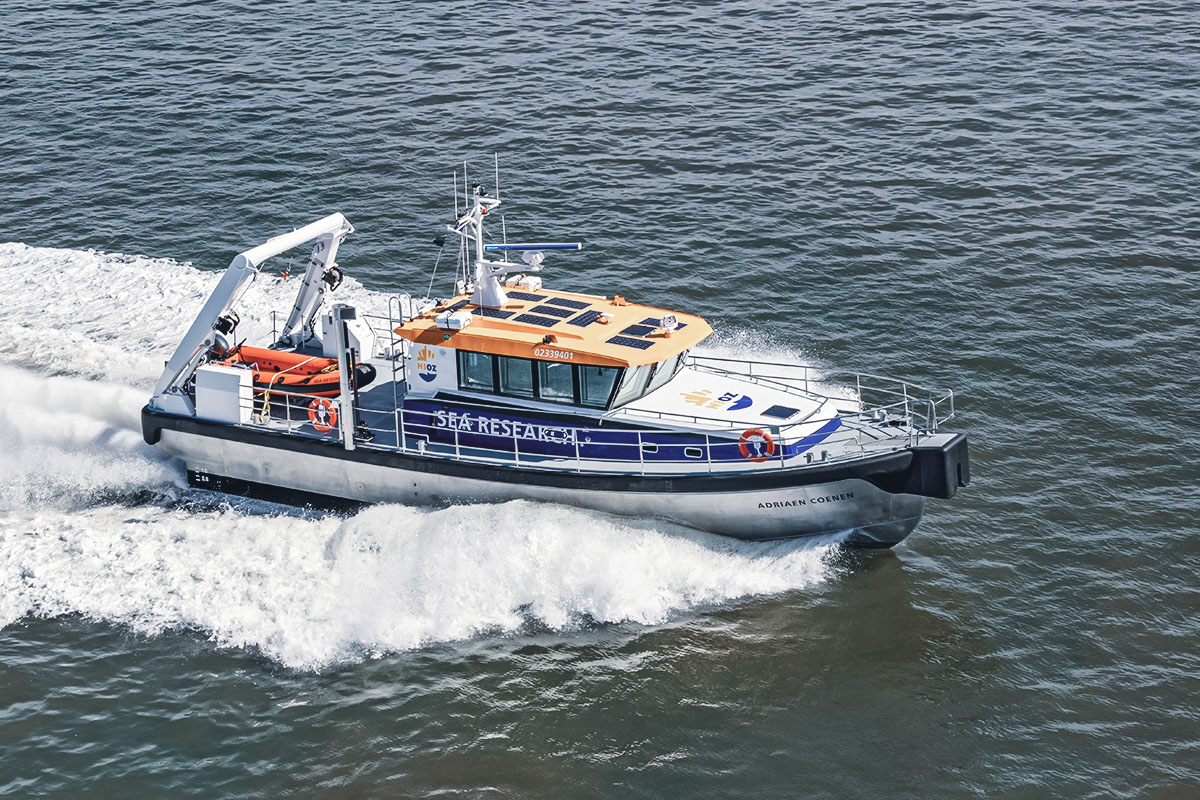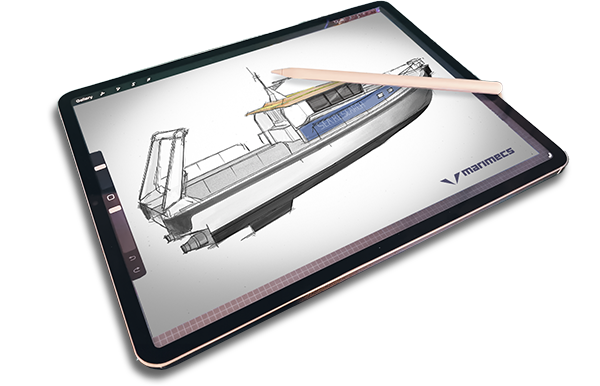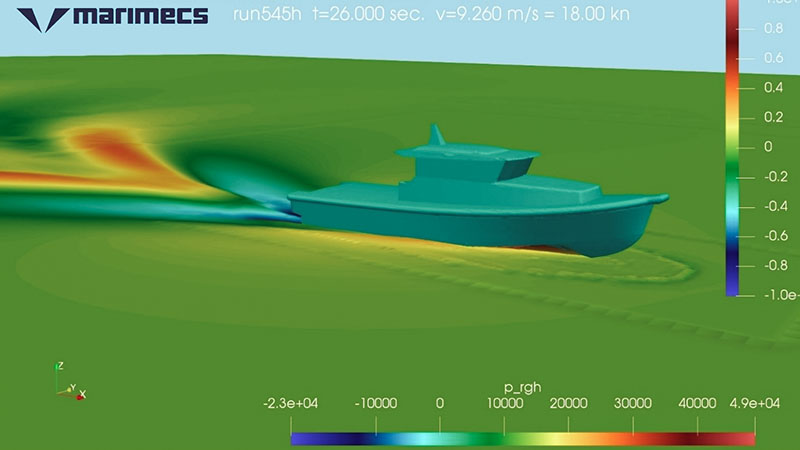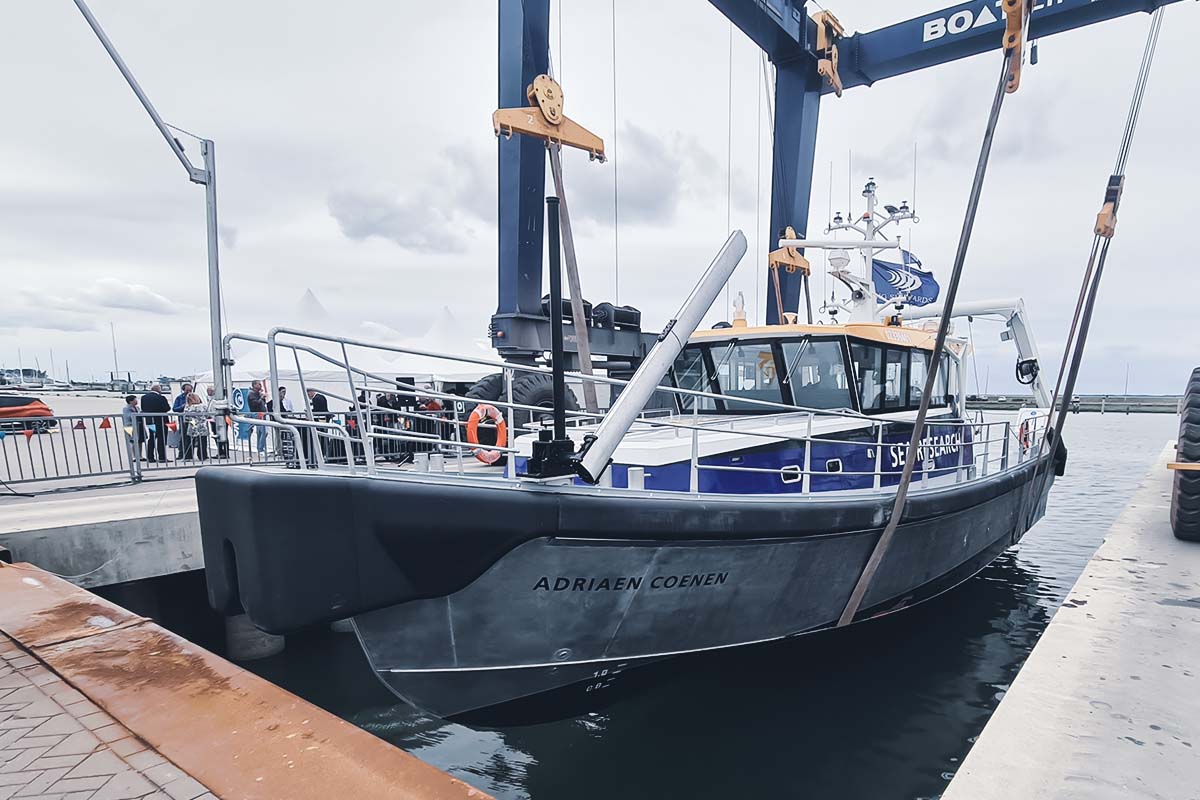
NIOZ’s fleet nears completion with the RV Adriaen Coenen being the first in line
Last week, the big sister ship of the RV Adriaen Coenen, the RV Wim Wolff, completed its initial series of technical trials on the IJsselmeer. With the RV Wim Wolff now in trials, two-thirds of the new fleet is now complete.

This calls for a little throwback:
In 2020, NIOZ asked Marimecs to develop a new ship for its sea research vessel fleet, replacing the outdated Wadden Sea research and support vessel RV Stern. The RV Adriaen Coenen, designed by Marimecs, is the smallest of the three-vessel fleet, with the latest addition, the RV Wim Wolff, being the second-largest.
Sustainable and versatile
Marimecs designed the RV Adriaen Coenen as a smart, functional, and green ship, meeting extensive requirements from not only NIOZ but also the prominent university circle, in close cooperation with all stakeholders. The result is a versatile research vessel focusing on usability, sustainability, and excellent sailing characteristics, meeting the shallow draught navigation profile required for the Wadden Sea area. The vessel is equipped to tow or push small objects, including mobile bird observation platforms. It features both wet and dry laboratories, supporting various research equipment.
Marimecs took care of the full scope of the design project, including naval architecture, construction and design. The ship was built and delivered by Next Generation Shipyard in Lauwersoog in 2022. An interesting fact is that all three vessels are being built by different shipyards through a European tendering procedure, each supported by different naval and engineering companies, with the first two vessels being constructed in the Netherlands.


RV Adriaen Coenen
General specifications
- Length overall: 19 m and beam: 5 m
- Speed: 20 kts max
- Draught: 0,8 m
- Material: Aluminium
- Crew + passengers: 2 + 12
- Features: A-frame, side frame, ADCP & Multibeam deployment, wet lab, dry lab, towing arrangement
- Engine & Propulsions: Scania (Stage V) with Hamilton water jets
Sustainable features
- C02 reduction 90%
- Smart energy systems, including HVO diesel substitute, combined with filters and catalytic converters, result in a remarkable 90% CO₂ reduction.
- Efficient energy usage, with features like heat recovery in cooling, motion-sensor LED lighting powered by solar panels, battery usage during dry periods, plug-in capability for port stays, and maximum thermal insulation.
- The combination of the hull and the jet propulsion system ensures minimal impact on marine life as it provides an improved acoustic profile, significantly better than a conventional propulsion system.

